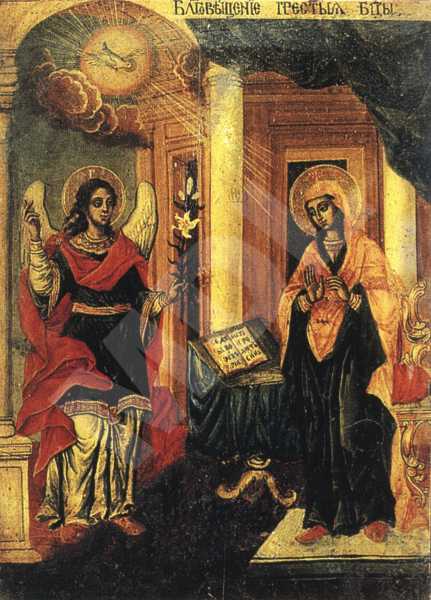The Annunciation
Type:
Icon
Period:
The beginning of the
19 century
Toma Vishanov-Molera, born around 1750, painter of icons and murals, founder of the Bansko school of art. He grew up in the family of the clergyman Vishan. Around 1765 he went to Vienna, where he studied painting. It is not known who were his teachers there or when he returned to Bansko. His fellow villagers called him the Moler, Molera(from German Maler ‘painter’), whence the entire family's surname. Under the influence of the European 18th century art Toma Vishanov painted his works in a new manner, unknown until then in Orthodox art. The figures are realistic, vivid, expressive. Toma Vishanov is an innovator in the early period of Bulgarian Renaissance. His ideas on art were not understood and at first were rejected by his contemporaries. His work has not been studied extensively. He died after 1811 in Bansko.
Dimmensions (cm):
27
/ 22.5
/ 2
Location
Country: Bulgaria
Province: Blagoevgrad
Town: Bansko
Church: St. Trinity
Source
Country: Bulgaria
Province: Blagoevgrad
Town: Bansko
Church: St. Trinity
Description
A traditional composition, treating the theme. The Holy Mother of God is painted standing on the right-hand side, and on the left-hand side is Saint Archangel Gabriel, holding a fullblown lily. Above him a flying dove - the symbol of the Holy Spirit, in a radiance, is pouring down the rays of God's blessing over the Holy Virgin. There is, between the two saints, a small lectern, with an open book on it with the text of the Annunciation. The scene is laid against the background of a richly decorated in the Baroque style interior.
Iconographical technique: Combined
The varnish cover is applied thickly and evenly. The gilding on the aureoles is with gold-leaf.
Base material: Wood
The icon's base is of two softwood panels, joined by means of two beams. The ground coat is of plaster, laid thinly and evenly.
State, restoration traces and comments
There are overpaintings in the icon's lower part, around the feet of the figures and on the damaged places of the frame. For its better preservation, the icon is placed in a spe¬cially made glass frame.


